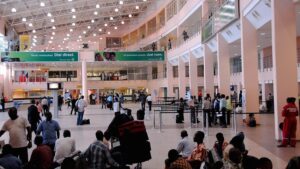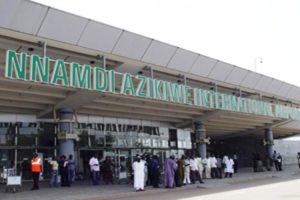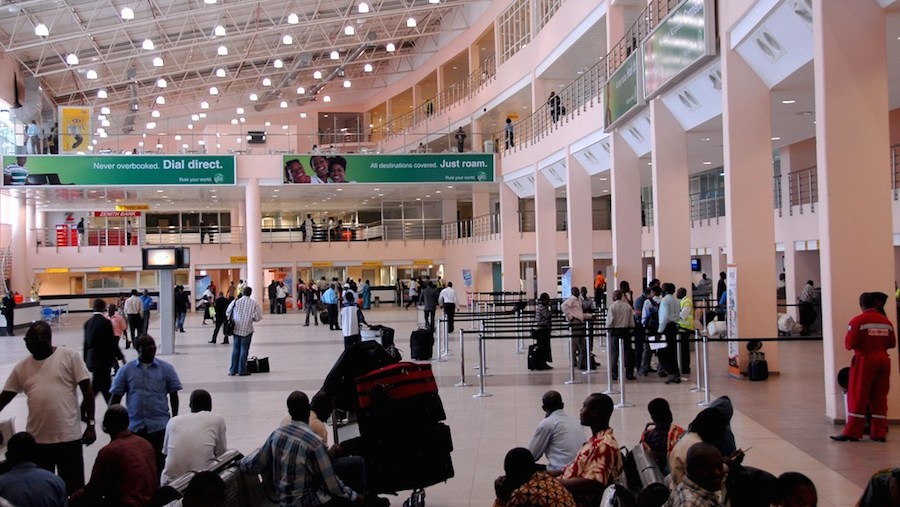
For several years, delays and cancellations have been associated with flight operations in Nigeria, a development that has created uncertainty among air passengers. Writer looks at ways such incidents could be significantly reduced
The average Nigerian air traveller will always hold airlines responsible for flight delays and flight cancellations.
This explains why some passengers vent their frustration on airlines’ facilities and their personnel when prolonged delays occur. Although illegal, this has been the trend over the years in Nigeria. But investigations confirm that there are many factors that could lead to flight delays. Some are attributed to the airlines; some to airport facilities and one of the major factors, which no one can be held responsible, is weather, a natural phenomenon.
From the statistics on flight operations in Nigeria between January and December 2022, made available last week by the Nigerian Civil Aviation Authority (NCAA), there are indications that compared to 2021 there has been no marked improvement in the number of delays and cancellations.
Also to confirm that this is not just airlines’ challenge, the difference in the number of delays between international flights and local flights is insignificant.
Domestic airlines operated 80, 328 flights last year and recorded 47, 144 delays; 795 flight cancellations and 91 air return. International airlines recorded 13, 003 flights, 4, 628 delays, 82 cancellations and 31 air return.
In 2021 international airlines recorded 9, 675 flights, 3, 216 delays, 37 flight cancelations and 24 air return; while domestic airlines recorded 74, 537 flights, 41, 328 delays, 542 cancelations and 110 air return.
International and domestic airlines recorded more flights in 2022 with slightly higher flight delays, cancellations and air return and the factors responsible for these delays are still prevalent.
Passengers’ Inconvenience
Editorial published early last year by THISDAY Newspapers, showed the medium observed that air travel in Nigeria is beset by frequent delays, and sometimes outright cancellation of flights without any justification.
According to the editorial, “A passenger on scheduled travel anywhere in the country at a particular time is never sure when the flight will take off or if it will take off at all. This disorganises business plans, appointments and other engagements and gives rise to inconvenience and frustration, as travellers are sometimes left stranded at the airports. Sadly, this situation has gone on for years, and despite occasional directives from relevant authorities on this vexatious problem, nothing seems to have changed.
“We are aware that some flight delays are caused by bad weather and the airlines cannot be blamed for this. But most of the time, there is no rational explanation for the delay and cancellations leading to suspicion that they are deliberate, most often to take more passengers. There is also the notorious ‘VIP movement’, which is now rather frequent. The authorities must deal with this nuisance. Meanwhile, it is ordinarily expected that airlines with few aircraft operate fewer routes and destinations and therefore should run almost seamless services because they are unencumbered by complex scheduling challenges. But all the airlines behave in the same manner, which suggests a serious systemic problem.”
Weather
After it was thought that harmattan weather had gone for good in January this year, it suddenly appeared last week and began to torment airlines and passengers. But according to airline operators, flight disruptions in December last year and in January this year were not as devastating compared to previous years, but in February it suddenly appeared and led to flight disruptions. Earlier in the week airlines cancelled flights and some delays theirs due to bad weather.
Valuejet on Monday, issued a notice to its passengers saying, “Our flight operations have recently been impacted by the current harmattan weather. Due to poor visibility caused by the weather, we had to delay and cancel some flights for safety reasons.”
But it is expected that airlines should have envisaged these weather disruptions because the Nigeria Meteorological Agency (NIMET), always issue warnings and weather predictions to airlines and other users of weather services.
Warning
NIMET issued a statement on February 2, 2023 warning that there would be bad weather in subsequent days. NIMET alerted stakeholders and the general public on the possibility of deterioration in visibility as a result of observed dust haze propagated into the country from the source region. The agency said: “The weather reports from the country, indicating the approximate position of Inter-Tropical Discontinuity (ITD). Winds at 10 meters and 800 meters (925hPa) above the ground surface indicate favourable conditions for further Dust-Haze propagations into the nation, which will worsen horizontal visibility.”
The release further stated that observation from the source region indicates that “Niger (Maine-Soroa, Goure, Maradi, N-guigmi, Diffa, 61091, Bila and Agadez) and Chad (Faya-Largeau and Ndjamena) have both reported Dust-Haze with poor horizontal visibility.”
The agency said it expected that “in the next few hours, strong winds at 800m will spread more dust into the country thus, causing deterioration in horizontal visibility.”
It added that there were prospects of thick dust haze (in poor horizontal visibility, less than1000m) over Katsina, Kano, Yobe, Bauchi, Gombe, Jigawa, Borno, Adamawa, Sokoto, Zamfara, Kebbi and Kaduna states; while North central states are expected to report moderate dust haze (visibility of 2–5km).
Some industry stakeholders argued that if airlines have taken cognizance of these warnings they would have envisaged the adverse weather and made provisions for it in their flight schedule. This would help to avert flight delays and cancellation.
Poor infrastructure
International airlines take seriously their flight schedules because they align with their integrated schedules in their global network; so they have to arrive at their operational hubs in time to distribute their passengers to farther destinations. So, for the fact that they recorded 4, 628 delays in 2022 and 3, 216 delays in 2021, indicates that there are extraneous factors beyond the airlines that cause the delays and that is attributed to poor infrastructure. This has been fingered as one of the major culprits of flight delays in Nigeria. Country managers of international carriers told THISDAY that poor airport facilities is a major set back in on-time operation of airlines, especially in Lagos and the Abuja airports.
THISDAY investigation revealed that since it became indicative that more people travel by air the terminal space has become inadequate for travellers. Even at low season in January the GAT terminal is crowded. The number of counters at the Air Peace part of the terminal is adequate that passengers travelling to some destinations have to be called out and attended to away from the counter. The poor passenger facilitating process makes delays inevitable. By the time passengers go through the two x-ray machines and arrive at the departures, breathless, at least over 30 minutes have been wasted for that flight. That may explain why the Federal Airports Authority of Nigeria (FAAN) is expanding the GAT facility, but industry observers complain that work is very slow because it ought to have been completed, going by the agency’s initial deadline.
Shrinking Ramp
Also at the airside of the General Aviation Terminal the ramp is small for the number of aircraft that park there. In fact, pilots have to be careful in order not to clip the wing of their aircraft. Recently passengers had fully boarded on Air Peace flight and the aircraft was ready to depart but it could not be pulled back to taxi to the runway because it was blocked by Arik Air aircraft that was boarding passengers. When contacted, the pilot of the flight said he had to compete with boarding of the passengers before it would move the aircraft for the Air Peace aircraft to be pulled back. The flight waited for almost another 30 minutes.THISDAY investigation also revealed that Air Traffic Controllers allow a flight that has taken off about five minutes before they would give start up to another. In other words, an aircraft could be waiting at the holding point of the runway for five minutes for the aircraft that has taken off to reach a cruise level. Most often, especially at the Lagos airport, after it has taken off, the aircraft would wait for another five minutes or more for the one coming into Lagos to land. So on the average, an aircraft on the holding point can wait for 15 to 20 minutes before taking off. These delays build up on the aircraft and would affect on the services it would operate for that day. With the new technology in airspace management embraced by the Nigerian Airspace Management Agency (NAMA) it is expected that it should take shorter time to wait for a flight that has taken off before another would be given start up.

Airport Capacities
Industry expert and the Secretary General of Aviation Round Table (ART), Group Captain John Ojikutu, told THISDAY that there are many factors that give rise to flight delays. He identified ground services, from check-in to security screening and the capacity of the airports in terms of facilities and personnel.
“There are many factors that contribute to flights delays necessarily more from the ground services providers and much of cancellations from the airlines operators themselves. First, view the causes of delays from the airports capacities; how many of the airports cause more delays than the others? What is the capacity of each in terms of accommodation for aircraft and facilitation of passengers? In Lagos, for instance, the aprons (ramp) are not sufficient for the number of aircraft available for flight particularly for the early morning flights; the aircraft are scattered away from the passengers terminal buildings; there are no sufficient boarding gates or separate boarding gates for the number of flights scheduling departure for almost same time; the fueling are done through fuel tankers and not through hydrants on the aprons,” Ojikutu said.
He recalled that there were enough hydrants at the international terminal of the Lagos airport (MMI) but due to prolonged disuse the facility has broken and become obsolete.
“There are sufficient hydrants on the aprons at MM1 but the hydrants have been dried for well over 40 years and there had been no effort to repair them to increase efficiency. How many tankers would you have on the aprons compare with hydrants that would facilitate the movement of flights from MM1? How would you compare the passengers facilitation at MM1 with two boarding gates with MM2 (domestic terminal, Lagos) with eight boarding gates? State and number of terminal and aprons facilities are contributory to the facilitation of flights operations and possibly the details. Cancellation are factors of the airlines facilities preparation and readiness for planned flights, these include availability of aircraft and crew. Most cancellations are the creation of the airlines operators while delays are mostly, not all, are the creation of airport facilities,” Ojikutu further said.
Airlines
Airlines are responsible for some delays. According to airline operators, the major one is sudden aircraft malfunctioning, which means that all the flights that will be operated by that aircraft may be jeopardised. That could cause long delays. On Tuesday, Dana Air issued statement apologising to its passengers because of reduced capacity due to aircraft on ground (AOG). Another cause of delay for airlines is when there is bird strike, which most often renders the aircraft to AOG, the ability for the airline to deploy another aircraft to airlift the passengers becomes another challenge and could cause more delay
So it needs collaborative effort and commitment for Nigeria to curb the current rate of flight delays. These would include increasing airport personnel, improving airport infrastructure and acquisition of modern aircraft that would not demand frequent maintenance and breakdown.






